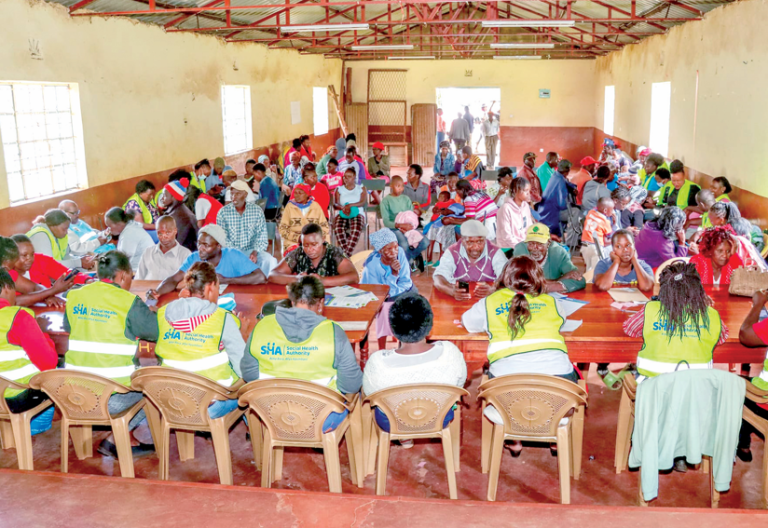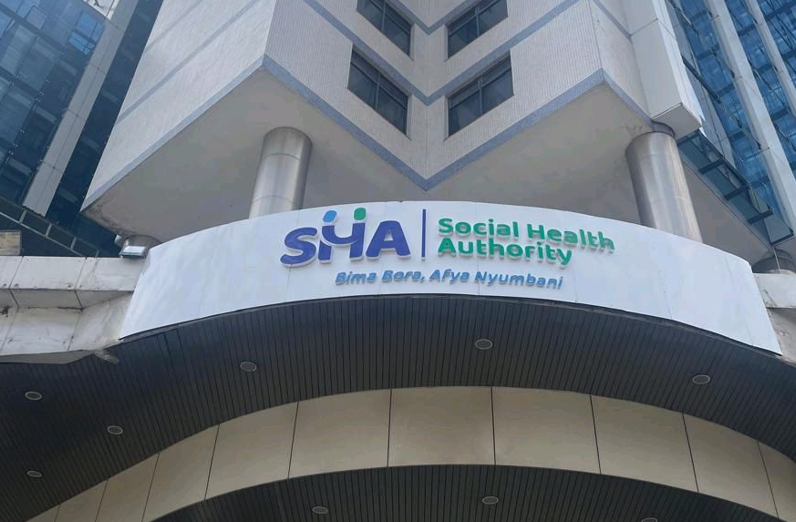Sickly State health plan wobbles into fresh headwinds

As the registration for the Social Health Insurance Fund (SHIF) nears 20 million Kenyans, challenges facing patients have continued to pile up.
A survey conducted by the Rural and Urban Private Hospitals Association of Kenya (RUPHA) between December and February shows that financial woes affecting SHIF are on the rise, with four in every 10 patients paying for health services from out of the pocket.
RUPHA observed that the burden of paying for health services from the pockets is greater in faith-based and private facilities, affecting five in every 10 patients compared to public hospitals, which have only two in every 10.
The survey showed that SHA (Social Health Authority) payments remain irregular, with 46 per cent of facilities receiving payments- down from 48 per cent in the period under review. Level 2 and 3 hospitals are the most affected, as 64 per cent of them received nothing.
According to RUPHA chairman, Brian Lishenga, the government has not disbursed any money from the Sh18 billion that it owed to the members of his association as of December 2024.
“When they say they have paid Sh11 billion, we find it strange because as at the end of December, providers had generated claims worth Sh18 billion. Now they are saying they have paid 11 billion and they are claiming that the Sh11 billion is everything up to the end of January. That is a lie,” he insisted, adding that if the government only paid Sh11 billion, it means by December they still owed providers Sh7 billion.
NHIF arrears
Lishenga criticised the government for allowing the debt on SHA to accumulate yet it still owed the hospitals a total of Sh29 billion under the defunct National Health Insurance Fund (NHIF).
“They have not done anything to pay the arrears. And when we asked hospitals, should the government pay NHIF or should it pay SHA? Over half (55 per cent) of them said the priority is NHIF. In fact, only 19 per cent said the priority is SHA payments,” he added.
The association reported a low reimbursement rate for outpatient services terming it a primary concern for among 42 per cent of health service providers, up from 40 per cent in December.
Technical failures in the SHIF system have also been persistent, disrupting service delivery and claims processing especially in private hospitals.
“Credential availability remains high at 93 per cent, but access challenges have risen to 62 per cent (up from 58 per cent in December). Key issues include non-functional credentials (29 per cent), automatic lockouts (27 per cent), and internet connectivity problems (14 per cent),” the report says.
The private health service providers also said that SHA portal issues persist, with 89 per cent of providers reporting challenges- up from 86 per cent.
“System downtime affects 73 per cent of facilities up from 68 per cent, One-Time Password (OTP) delays impact 71 per cent and 51 per cent struggle to track claim approvals. Missing benefits packages rose to 31 per cent from 27 per cent,” the report adds.
Additionally, as the number of registered Kenyans surge, verification of patients has worsened, affecting 83 per cent of facilities- up from 79 per cent two months ago.
“Key issues include OTP (One-Time Password) delays (63 per cent), patients without phones (59 per cent), missing dependents in SHA (55 per cent), and Afya Yangu portal issues (49 per cent),” Lishenga said.
System overhaul
The RUPHA head said that the health provider portal, which hospitals use to record patients’ information and submit claims to SHA should be overhauled as it has failed.
“That thing (provider portal) is not functional, it’s a total mess,” he said.
Even as more Kenyans continue to register under SHIF, he claimed that majority of them are not remitting monthly contributions because they have not completed the means-testing to know how much to contribute.
“The patient registration portal has too many problems. When you try to start doing means-testing, it starts hanging. Furthermore, not all patients in some rural areas have phones. So if you are waiting for OTP to come to a phone which you don’t have, how will you register,” he added.
Lishenga proposed that the country should abandon the new system of registration and revert to the biometric system, which was used under NHIF.
He emphasised that it will be easier to register patients with the biometric system rather than using phones.
Compliance challenges
Even where means-testing has been successful, he noted, the corresponding contributions generated are too high for the majority of Kenyans against the Sh300 that the government promised, prompting them to shun making contributions.
“The other reason why people are not paying is that the premiums which are coming out of the means-testing are unaffordable especially for the majority of the poor Kenyans. Somebody used to struggle to pay Sh500. You do means-testing for him, you tell him to pay Sh1,200. It is not realistic,” he said.
According to Lishenga, SHA lacks transparency on processing of claims and contributions made, which should be made public for stakeholders to scrutinise.
Overall, according to RUPHA, SHA transition score has declined from 46 per cent in December 2024 to 44 per cent currently, signalling a regression in the implementation of SHA reforms.
However, while outpatient services received poor ratings, the association noted that maternity and surgical services have recorded noticeable improvements, reflecting some progress in patient experience.










